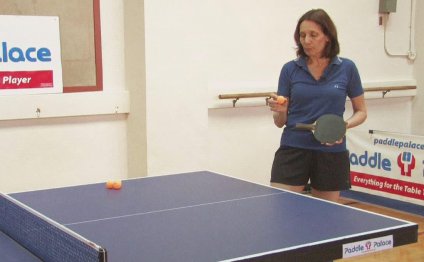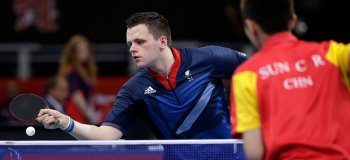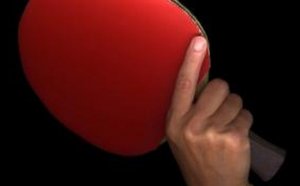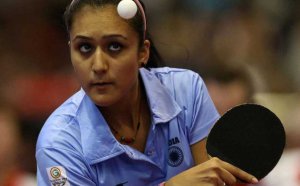
What are the rules of Table Tennis?
 Table tennis is a sport that is generally dominated by nations in Asia, particularly China and Korea, although in para table tennis a number of the world’s best players are European with Ukraine, Poland and Germany particularly strong.
Table tennis is a sport that is generally dominated by nations in Asia, particularly China and Korea, although in para table tennis a number of the world’s best players are European with Ukraine, Poland and Germany particularly strong.
Great Britain’s table tennis athletes went into London 2012 after three years under the guidance of Performance Director Gorazd Vecko, who was recruited by the British Table Tennis Association for People with Disabilities (BTTAD) following a disappointing performance by the sport in Beijing where it failed to medal, having consistently won at least two medals in the previous four Games.
Vecko brought with him a new dynamic regime, even making it possible for some of his players to move to Sheffield to train at the new EIS Performance Centre by sharing his house with them. The plan paid dividends in London, with the team bringing home four medals, including silver in the men’s class 7 singles for Will Bayley and bronze for Paul Davies in the men’s class 1 singles
Since then the GB team has gone from strength to strength and at the World Championships in China in 2014 Will Bayley became World Champion in men’s class 7 while Rob Davies took silver in men’s class 1 and Sue Gilroy took silver in women’s class 4. Bayley also won bronze in the men’s class 7 team event with Paul Karabardak and in June 2015 he regained the World number one ranking in men’s class 7 having first held the position in 2012.
In October 2015 the team enjoyed its most successful ever European Championships with 11 medals, including two golds for Rob Davies, who retained his individual title and successfully defended the men’s class 1 team title with Tom Matthews. In December 2015 Davies also regained the World number one ranking in men’s class 1.
In addition to its 14-strong Performance Squad the GB Para Table Tennis Team now has a thriving Pathway programme which is designed to identify and train young athletes with the potential to win medals at World and Paralympic level.
- First year at a Paralympic Games:
- Rome 1960
- Brief history:
- Table tennis is one of the traditional Paralympic sports and has been included in the Paralympic Games since the inaugural Games in Rome 1960. Standing players were included for the first time in 1976 in Toronto and athletes with a learning disability for the first time in 1980 in Arnhem, The Netherlands.
- Eligible impairment groups:
- Physical impairments and athletes with a learning disability
- London medal table:
- 1 - China (14 gold, five silver, two bronze)
2 - Poland (three gold, one silver, one bronze)
3 - Germany (two gold, one silver, one bronze)
18 = Great Britain (zero gold, one silver, three bronze) - GB medals in London:
- Will Bayley, silver, class 7 singles
Paul Davies, bronze, class 1 singles
Will Bayley, Ross Wilson and Aaron McKibben, class 6-8 team
Sara Head and Jane Campbell, bronze, class 1-3 team - Did you know:
- Table Tennis is the fourth largest Paralympic sport. It is played in over 50 countries.
- Rio 2016 venue:
- Riocentro - Pavillion 3
Rules:
Para table tennis follows the laws set by the International Table Tennis Federation (ITTF) with only slight modifications to the serving laws for athletes competing in wheelchairs. Each player aims to hit the ball over the net on to the opponent's half of the table and wins the point if they fail to return it successfully.
A match is played over the best of five sets, with each set won by the first player to reach 11 points. A two-point winning margin is required to win each set. The server changes every two points.
Competitions take the form of preliminary rounds followed by knockout stages.
In Rio, the team events will be played over the best of three matches - starting with a doubles and then one or two singles matches to decide the tie
Classification:
Athletes with a range of impairments can take part and there are 11 different classifications: 1-5 for those competing in wheelchairs, 6-10 for those who play standing and 11 for standing athletes with a learning disability.
Athletes are assessed and allocated a number between 1 and 10, depending on their functional ability - reach, muscle strength, locomotive restrictions, balance and ability to grip the bat. In the wheelchair category those competing in class 1 have the highest level of impairment with class 6 being for standing athletes with the highest level of impairment.
RELATED VIDEO



Share this Post
Related posts
Benefits of Table Tennis
Whether you’re playing doubles or singles, table tennis, or ping pong, can be a fast-paced competitive sport. In fact, when…
Read MoreFamous players of Table Tennis
William Henzell, Australia William Henzell is a fast playing Australian, originally from Adelaide. William has represented…
Read More










